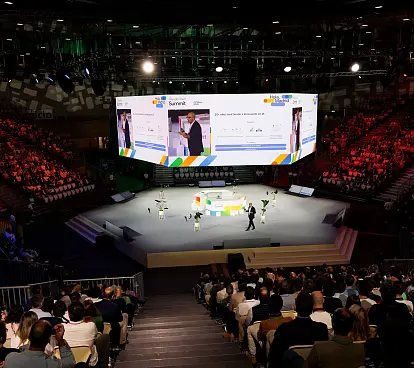
Elevating Customer Experience: The Vital Integration of Customer Service, Marketing, and Sales
July 15, 2025
Why Breaking Down Silos Between Teams Is Not Just About Efficiency, But Survival in the Experience Era
In an environment where decisions are faster than ever, channels are multiplying, and expectations are soaring, the biggest risk isn’t failing in a single interaction—it’s that each team is talking to a different version of the same customer.
Not because they are different people, but because each one only sees fragments of the same story: a campaign viewed by marketing, a call logged by support, an opportunity opened (and forgotten) by sales.
The problem isn’t who interacts with the customer, but from what context they do it. When information is scattered across disconnected tools, even the best team is essentially working blind. And customers notice: duplicate messages, lack of follow-up, inconsistent experiences.

Before Solving It, You Need to Understand: Who Is This Customer?
In theory, every company claims to be “customer-centric.” In practice, the customer is often just a collection of fragments scattered across tools, departments, and processes.
For marketing, the customer is a promising lead. They downloaded a whitepaper and opened a few emails.
For sales, it’s a lost opportunity. They almost purchased a service six months ago.
For customer support, it’s just an old ticket from a few weeks back.
The reality is that no team truly knows the customer. Everyone sees a piece—but no one has the full story.
Without that unified view, decisions are based on fragments. Interactions are repeated. Customers get frustrated. And the company misses opportunities.
Fragmented Experiences: When Every Channel Forces Customers to Start Over
When marketing, sales, and customer support don’t share information or context, what breaks isn’t just internal efficiency—it’s the customer experience.
This disconnect translates into frustration for the customer:
They have to repeat what they already said over email when calling the call center, receive promotions for products they already bought, or request a solution via chat only for the agent to discover they opened a ticket a week ago.
Sales opportunities are lost. Personalization efforts go to waste. Frustration builds: “I already filled out the form,” “Yes, I called last week,” “Why am I getting this promotion when I just bought it?”
According to Zendesk Benchmark data, 70% of customers expect any agent to have full context. Over 50% would switch brands after just one bad experience, and up to 73% would do so if poor experiences repeat.
Competing on price alone is no longer enough. The real competitive advantage is delivering a seamless, consistent experience, no matter which team the customer interacts with.
The Necessary Change: A Unified Customer View
Customer experience is built at every touchpoint. To make it work, you need to stop seeing customers as tickets, forms, or leads—and start seeing them as a continuous story.
At Sngular, we make this possible by integrating marketing, sales, and support data and workflows into a single, real-time ecosystem.
This gives a unified view of the customer: all teams access the same history, interactions, campaigns, and current status. Personalization improves, with messages and responses tailored to each individual’s journey.
To keep interactions smooth, context is embedded: support knows which campaign a customer came from or which product they purchased previously. Processes become intelligent: alerts, workflows, and decisions are automated based on customer behavior.
The result? Improved First Contact Resolution (FCR), because agents already know the essentials. Campaigns are more accurate, grounded in real data, not assumptions.
Customer effort (and internal team effort) is reduced, achieving the most important goal: stronger loyalty, because the customer feels heard, not interrogated.
And even more valuable: confidence that each team can continue the story exactly where the previous one left off.

How Do We Make It Happen? Integrations Are Key
Technology alone doesn’t solve the problem. What matters is how it connects and adapts to your operational reality.
We are an Advanced Zendesk Partner and we add all our technological capabilities to the Zendesk ecosystem stack.
We integrate the platform with CRM systems, ERP or enterprise management systems like Amara, email marketing platforms, sales tools, and more.
We build custom apps with our in-house teams—front-end, back-end, Zendesk specialists, and middleware developers (e.g., PHP).
With our approach, we create personalized agent apps that display all relevant context: commercial info, campaign history, open tickets, next steps.
This prevents unnecessary system changes, human errors, and loss of traceability between teams.
And what’s clear is that we don’t force changes in how people work: we connect what already works and make it more powerful.
Want to unify your customer experience and make your teams’ work easier? Let’s talk!
Our latest news
Interested in learning more about how we are constantly adapting to the new digital frontier?

Insight
October 17, 2025
How to transform Customer Experience dashboards into intelligent decisions

Insight
September 9, 2025
From Cost Center to Competitive Advantage: Discover the New ROI of Customer Service

Insight
June 10, 2025
Why Customer Service will be your main competitive advantage in the next two years

Event
May 26, 2025
Madrid pulses with the new era of Artificial Intelligence at the Google Cloud Summit 2025
